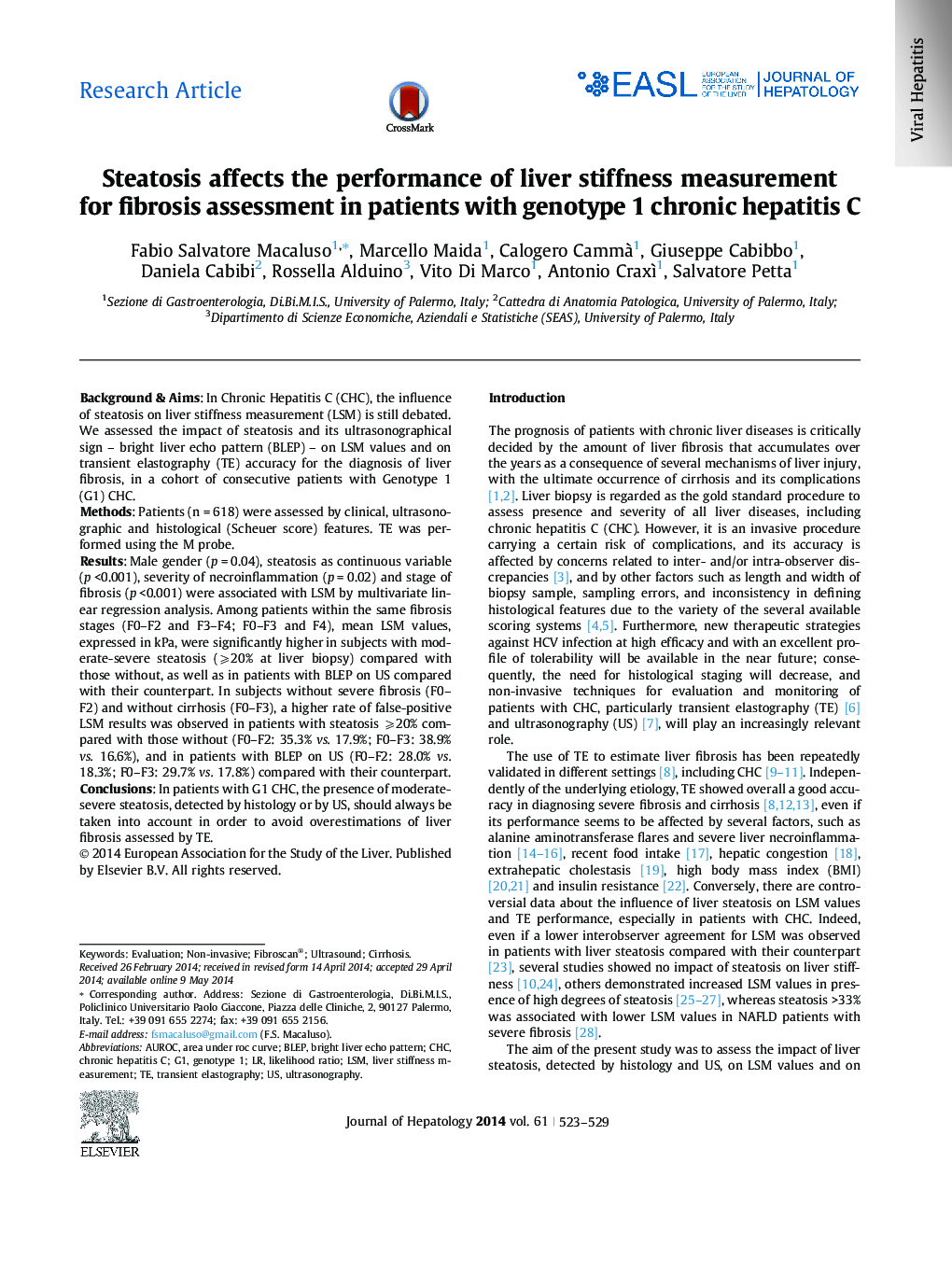| Article ID | Journal | Published Year | Pages | File Type |
|---|---|---|---|---|
| 6103227 | Journal of Hepatology | 2014 | 7 Pages |
Background & AimsIn Chronic Hepatitis C (CHC), the influence of steatosis on liver stiffness measurement (LSM) is still debated. We assessed the impact of steatosis and its ultrasonographical sign - bright liver echo pattern (BLEP) - on LSM values and on transient elastography (TE) accuracy for the diagnosis of liver fibrosis, in a cohort of consecutive patients with Genotype 1 (G1) CHC.MethodsPatients (n = 618) were assessed by clinical, ultrasonographic and histological (Scheuer score) features. TE was performed using the M probe.ResultsMale gender (p = 0.04), steatosis as continuous variable (p <0.001), severity of necroinflammation (p = 0.02) and stage of fibrosis (p <0.001) were associated with LSM by multivariate linear regression analysis. Among patients within the same fibrosis stages (F0-F2 and F3-F4; F0-F3 and F4), mean LSM values, expressed in kPa, were significantly higher in subjects with moderate-severe steatosis (⩾20% at liver biopsy) compared with those without, as well as in patients with BLEP on US compared with their counterpart. In subjects without severe fibrosis (F0-F2) and without cirrhosis (F0-F3), a higher rate of false-positive LSM results was observed in patients with steatosis ⩾20% compared with those without (F0-F2: 35.3% vs. 17.9%; F0-F3: 38.9% vs. 16.6%), and in patients with BLEP on US (F0-F2: 28.0% vs. 18.3%; F0-F3: 29.7% vs. 17.8%) compared with their counterpart.ConclusionsIn patients with G1 CHC, the presence of moderate-severe steatosis, detected by histology or by US, should always be taken into account in order to avoid overestimations of liver fibrosis assessed by TE.
